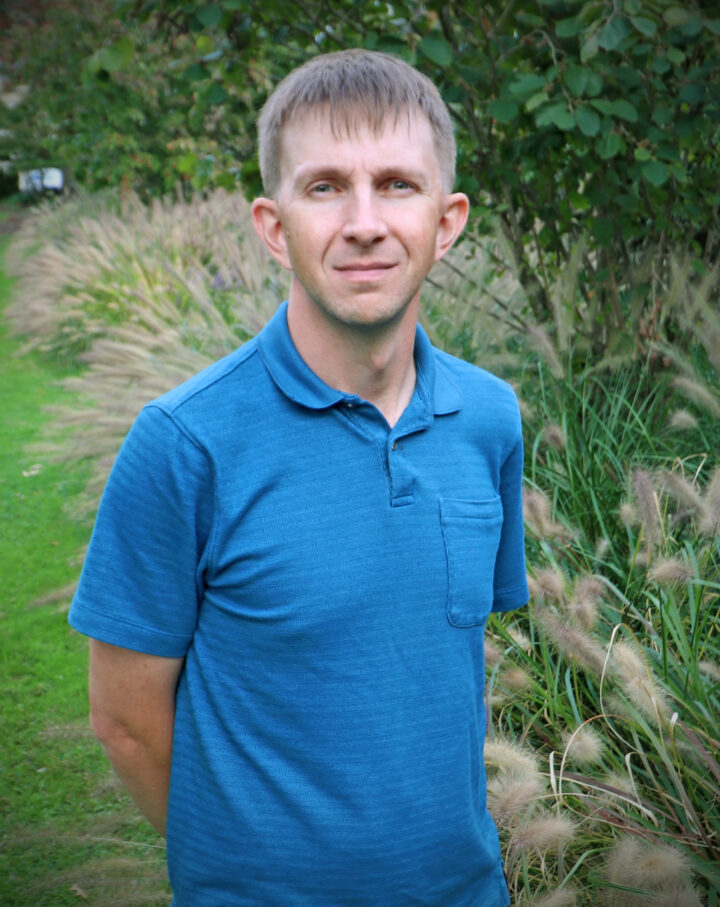C-SHiELD: next-generation of extreme weather prediction
December 21, 2021
When it comes to climate science, seeing the forest for the trees is important. Seeing each tree within the forest, however, may prove more revolutionary.
One of the biggest advancements in weather forecasting over the past decade is the ability to go beyond the overall global weather patterns and instead zoom in closer to study individual storms.

Within NOAA’s Geophysical Fluid Dynamics Laboratory (GFDL), Physical Scientist Lucas Harris is helping to advance this possibility.
With the end of the 2021 hurricane season coming to an end in December, and yet another year of high severe events recorded, advancements in climate modeling and weather prediction are at the center of attention.
As Deputy Division Leader for the Weather and Climate Dynamics Division, Harris is leading the development of a next-generation weather prediction model called C-SHiELD, or “Continental System for High-resolution prediction on Earth-to-Local Domains.”
Currently an experimental model, he said, C-SHiELD takes both a global view of weather patterns and can also zoom in to represent regional and local weather. This gives meteorologists more information when trying to predict smaller extreme storms over the continental United States.
One example of a successful forecast from May of 2021 was a severe storm outbreak across Oklahoma into Alabama and Georgia, associated with a cold front spanning from the Ohio River Valley southward into the Gulf of Mexico.
Harris said C-SHiELD predicted where the storm would intensify five days in advance, when comparing its results to the global SHiELD results without the zooming.
“This is a much longer range than any other severe storm prediction model,” he said, adding, “C-SHiELD shows much more fine-scale detail than other long-range models, including multiple lines of strong storms, that can give forecasters extra information about what kind of weather hazards – tornadoes, hail, heavy rain, strong winds – to expect.”
C-SHiELD research results are encouraging, he said, because of the possibility of conducting seasonal and longer climate simulations by applying these storm-sized details.
“This is something that is within our grasp right now, in my belief. It’s just waiting for a big enough computer,” Harris said. “Can we predict severe weather outbreaks on monthly timescales? We have preliminary research that shows this may be the case for some parts of the United States.”
Being able to predict smaller-sized but more damaging storms gives stakeholders better information to prepare for future disasters and infrastructure weaknesses, he said.
Previous forecasting advancements gave airports the data to know when to delay flights to avoid small-scale wind downbursts, which have led to crashes in the past.
Having more regional data is helping weather prediction overall.
“It can give you a more precise idea of what sort of storms you might expect, what sort of outbreaks you might expect, and the geographical extent of those outbreaks,” Harris said.
Climate simulation experiments can even help reveal how severe weather will change under global warming, which reveals a delicate balance.
“The same storms that cause tornadoes bring a lot of rain to the central United States. That’s an area that used to be called the Great American Desert. What happens if the rains no longer come? That area could potentially become a desert again. That’s a rather shocking possibility we would need to plan for,” Harris said.
At the heart of it all is the Finite-Volume Cubed-Sphere Dynamical Core, or FV3, the computational engine for the weather prediction systems that are modernizing weather forecasting for NOAA’s National Weather Service.
Developed at GFDL, FV3 uses computing methods from physics and engineering to quickly and accurately compute the winds and how they transport moisture, clouds, heat, and pollutants worldwide. NASA uses FV3 for weather, climate and chemistry modeling as well, as do other centers around the world.
As C-SHiELD is further developed, Harris said, its improvements can advance not just the FV3 dynamical core, but those applications of FV3 by other agencies as well.
The next step, Harris said, is zooming even further onto individual clouds and blending both the global and regional information to get a better understanding of the atmosphere on a day-to-day basis.
Studying the weather was something Harris became fascinated with at an early age, which grew into a greater scientific curiosity as an adult.
“Just the idea that our weather here depends on weather systems located hundreds or thousands of miles away, it tells me about an almost cosmic unity between human society and its environment,” he said.


